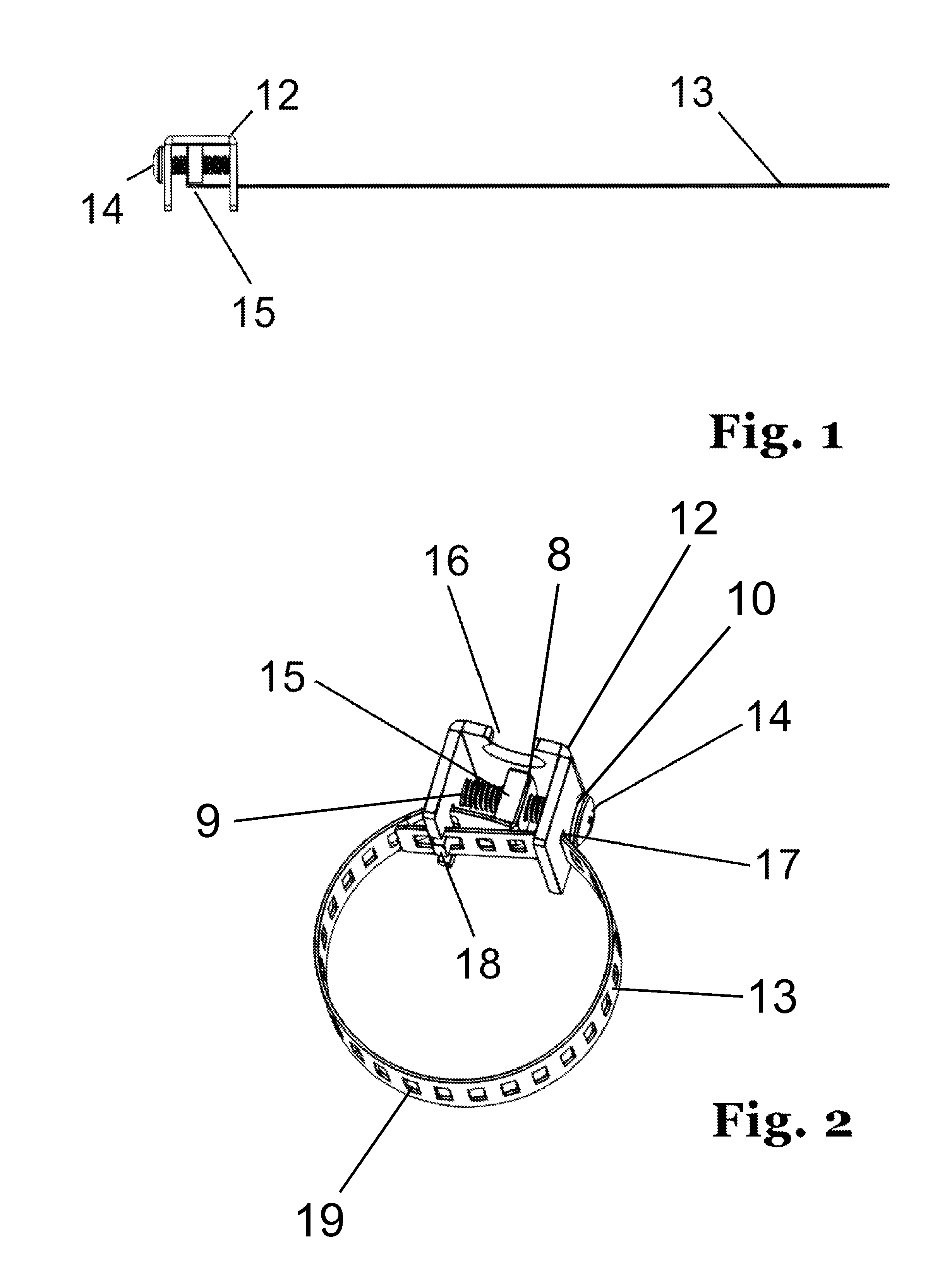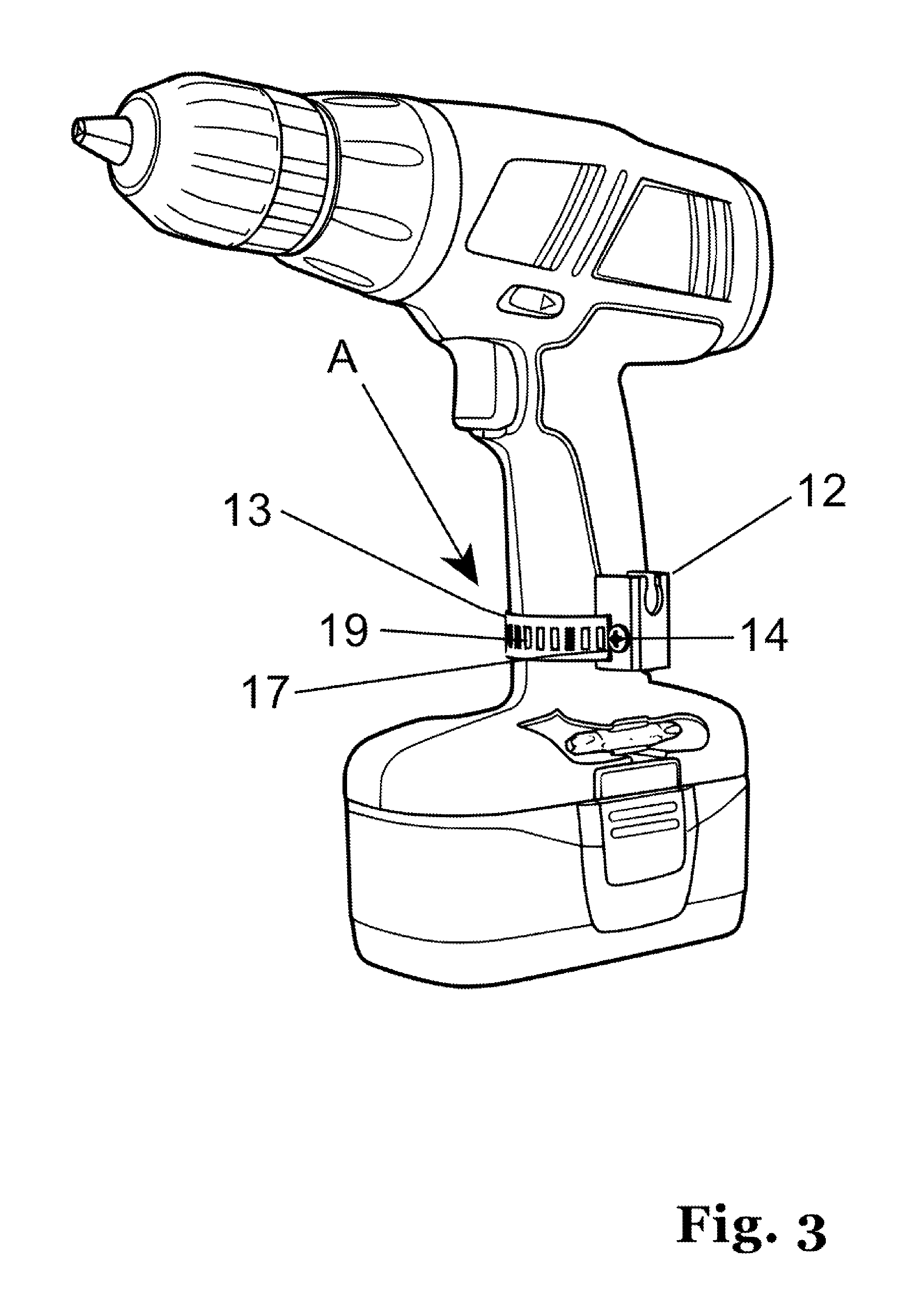Tool Holding Device
a tool and tool technology, applied in the field of tools, can solve the problems of not being able to effectively decouple the swinging motion of the attached tool from the user, not having a known prior art or invention that can safely, and not being able to withstand the constant abuse of construction, etc., to achieve the effect of safely climbing ladders, convenient removal, and safe and convenient mounting
- Summary
- Abstract
- Description
- Claims
- Application Information
AI Technical Summary
Benefits of technology
Problems solved by technology
Method used
Image
Examples
Embodiment Construction
FIGS. 1-13—Preferred Embodiments
[0046]Referring now to FIGS. 1 & 2 showing two views illustrating the mechanical fastening device of the present invention. The mechanical fastening device of FIGS. 1 & 2 is comprised of several working parts. 12 is a bracket providing apertures sized to receive additional parts detailed herein. 13 is a flexible band providing spaced slots 19 of predetermined shape and size that passes through an aperture 11 in the bracket 12 and is mechanically held within the bracket 12. The bracket of FIGS. 1 & 2 also provides an aperture 17 that allows the loose end of the band 13 to pass through, and a flange 18 that allows one of the slots 19 of the band 13 to seat in it so that the band can be tightened when the other end is pulled. The other end can be pulled by turning the screw 14 so as to move the nut 15 against the flange 8 which tightens the band 13. The bracket 12 provides apertures 9&10 to receive an adjustment screw 14. The adjustment screw 14 engages ...
PUM
 Login to View More
Login to View More Abstract
Description
Claims
Application Information
 Login to View More
Login to View More - R&D
- Intellectual Property
- Life Sciences
- Materials
- Tech Scout
- Unparalleled Data Quality
- Higher Quality Content
- 60% Fewer Hallucinations
Browse by: Latest US Patents, China's latest patents, Technical Efficacy Thesaurus, Application Domain, Technology Topic, Popular Technical Reports.
© 2025 PatSnap. All rights reserved.Legal|Privacy policy|Modern Slavery Act Transparency Statement|Sitemap|About US| Contact US: help@patsnap.com



